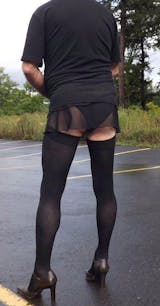
Introduction
Sustainable fashion is becoming increasingly popular as consumers become more aware of the impact of fast fashion on the environment and society. But with so many options available, it can be difficult to know what to look for when shopping for sustainable clothing. In this article, we will explore the key factors to consider when making conscious fashion choices. From natural materials to ethical production, we'll cover everything you need to know to make informed decisions about your wardrobe.Natural Fabrics
When shopping for sustainable clothing, one of the first things to consider is the fabric. Natural fibers such as cotton, linen, and wool are biodegradable and require less energy to produce than synthetic materials. In this section, we'll explore the benefits of natural fabrics and how to identify them when shopping.Organic Cotton
Cotton is one of the most commonly used fabrics in clothing production, but conventional cotton farming practices can be harmful to the environment and the people involved in the supply chain. In this section, we'll explain what organic cotton is and why it's a more sustainable option.Recycled Materials
Recycling is a key component of a circular economy, and the fashion industry is starting to embrace recycled materials as a way to reduce waste. In this section, we'll explore the different types of recycled materials used in clothing production and how to identify them.Ethical Production
Sustainable fashion goes beyond the materials used in clothing production. Ethical production practices are also an important consideration when making conscious fashion choices. In this section, we'll explain what ethical production means and how to identify brands that prioritize worker rights and fair labor practices.Fair Trade Certification
Fair trade certification is a way to ensure that workers involved in the production of clothing are paid fairly and work in safe conditions. In this section, we'll explore the benefits of fair trade certification and how to identify brands that are certified.Sustainable Packaging
Packaging is a significant contributor to the fashion industry's environmental impact. In this section, we'll explore the different types of sustainable packaging used by clothing brands and how to identify them.Carbon Footprint
The fashion industry is responsible for a significant portion of global greenhouse gas emissions. In this section, we'll explain what a carbon footprint is and how to identify brands that prioritize reducing their carbon footprint.Transparency
Transparency is an important aspect of sustainable fashion. Consumers should be able to easily access information about a brand's production practices and supply chain. In this section, we'll explore the benefits of transparency and how to identify brands that are transparent about their practices.Longevity
One of the most sustainable things you can do is to buy clothing that will last a long time. In this section, we'll explore the concept of longevity and how to identify clothing that is made to last.Secondhand and Vintage
Buying secondhand or vintage clothing is a great way to reduce waste and give new life to pre-loved garments. In this section, we'll explore the benefits of shopping secondhand and how to find the best deals.FAQs
What is sustainable clothing?A: Sustainable clothing is clothing that is produced in a way that minimizes its impact on the environment and society.
Why is sustainable clothing important?
A: Sustainable clothing is important because the fashion industry has a significant impact on the environment and society, and sustainable fashion choices can help reduce that impact.
What are natural fabrics?
A: Natural fabrics are fabrics made from fibers that come from plants or animals, such as cotton or wool.
What is organic cotton?
A: Organic cotton is cotton that is grown without the use of harmful pesticides and fertilizers.
What is fair trade certification?
A: Fair trade certification is a way to ensure that workers involved in the production of clothing are paid fairly and work in safe conditions.
What is a carbon footprint?
A: A carbon footprint is the amount of greenhouse gas emissions that are produced by a person or organization.
What is transparency in fashion?
A: Transparency in fashion refers to brands being open and honest about their production practices and supply chain.
How can I identify sustainable clothing brands?
A: Look for certifications such as GOTS (Global Organic Textile Standard) or Fair Trade, and do research on a brand's production practices and supply chain.
What is the benefit of shopping secondhand?
A: Shopping secondhand reduces waste and givesnew life to pre-loved garments, which helps to reduce the environmental impact of the fashion industry.
How can I find secondhand clothing?
A: You can find secondhand clothing at thrift stores, consignment shops, online marketplaces like Poshmark or Depop, or by hosting clothing swaps with friends.





